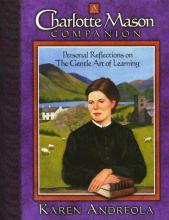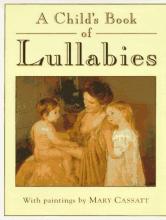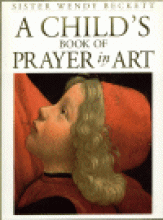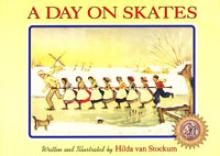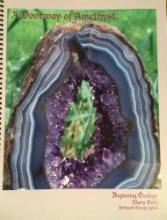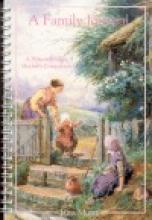No name
A Catholic How-to-Draw
This lovely and engaging book presents 30 drawing projects (of mostly religious subjects) in an easy-to-follow step-by-step fashion so that even very young children can gain confidence in their drawing skills and enjoy making beautiful decorations for holy day decorations, greeting cards and more.
The projects included are as follows:
Sacred Heart of Jesus Immaculate Heart of Mary Rose Rosary Bethlehem Chalice and Host Bouquet Bow Nativity Lamb of God Monstrance Mother Mary Child Jesus Praying Boy Praying Girl Altar Cherub Crucifix Baby Jesus Saint Joseph Jesus, Our Savior Our Lady of Fatima Angel Our Lady of Guadalupe Risen Christ Blessed Kateri Tekakwitha Good Shepherd Saint Francis of Assisi Saint Therese of the Child Jesus Holy Spirit
Several of the projects also include more advanced steps for more eager young artists. An appendix offers a number of smaller pictures to decorate the larger projects - including birds, butterflies, flowers and more.
The spiral binding is much appreciated because the book lies perfectly flat, leaving the artist with both hands to work on his project.
This is a completely new book from Catholic Heritage Curricula's previous book with the same title.
A Charlotte Mason Companion
I have talked to a number of people who read For the Children's Sake, loved it, and wanted more. Karen Andreola has really provided for that need with this book. It was delightful to read Mrs. Andreola's personal experiences and ideas for applying the philosophies of Charlotte Mason to her own family's homeschooling years. Reading through some of the chapter headings gives you a sense of the flavor - The Atmosphere of Home, The Happiness of Habit, How We Use Whole Books, Narration: The Art of Knowing, Teaching Composition, Kernels of Wisdom, Simply Grammar, Hero-Admiration as a Factor in Education, Picture Study, Music Appreciation, Once Upon a Time - Fact or Fairy Tales, Shakespeare: A Mother's Secret Resource, Neighborhood Nature Study, Magnanimity and Enthusiasm, Picnics Any Time At All, etc. Each chapter also includes "Questions for Personal Reflection or Support Group Discussion". Although Karen Andreola is not Catholic, I didn't detect any anti-Catholic bias in her own writings. However, I would use caution with regard to books she recommends (such as Pilgrim's Progress) which may be inappropriate. I think you'll also find that most of her ideas are very compatible with our faith. I would even go so far as to say that using this book might be very helpful in giving your children a Catholic education. Her chapter entitled "Hero-Admiration as a Factor in Education" is a good example. You may at first be frustrated that she doesn't even mention the Saints here. You may realize, however, that the points she makes in this chapter are highly applicable to learning about the Saints and the importance of encouraging your children to know and love them. As with any homeschooling book, there are ideas that I wouldn't agree with on a practical level.
A Child's Book of Lullabies
This is a songbook of lullabies illustrated with paintings of mothers and babies by American artist Mary Cassatt. The songs are mostly classics such as Twinkle, Twinkle Little Star and Now the Day is Over, but you'll also find Cum By Yah. Mary Cassatt was an impressionist from the 19th century and her paintings include lots of baby bottoms and nursing mothers. They are all very sweet, but not necessarily everyone's style. It is sold by Dorling Kindersley with a tape of the lullabies. On one side of the tape is the music with vocalization and the other side is the instrumental version of the same songs. I don't care for the voice, but the tape does help to learn the songs, especially if you don't know how to read music. I think this makes a very nice beginning art and music book, particularly for preschoolers, and could also become a nice part of your bedtime routine.
A Child's Book of Prayer in Art
This book is designed to help your child discover the lessons present in many fine works of art. The inside cover explains "In this, her first book for children, Sister Wendy has selected paintings that can speak to children, illustrating the important values of life, such as love, respect and forgiveness. She helps children to look and listen, gaining insight into art while developing a greater understanding of their own spirituality." For an art book published by a secular company the material is fairly religious and includes such paintings as French Peasant Girls Praying, The Martyrdom of Saint Clement, Christ Discovered in the Temple, The Kiss of Judas, and The Calling of Saint Matthew. The art selections are great - very classic - and the text is very simple. An interesting side point that homeschoolers will enjoy is that there is a painting called The Young Schoolmistress. In her description, Sister Wendy mentions, "Perhaps she is his big sister and he is being taught on his own at home. It is not only in the classroom, or from qualified teachers, that we learn about the world."
A Continual Feast
A Day on Skates
A Doorway of Amethyst
Here is a geology text that assumes no conflict between Christianity and science and is faithful to Church teaching. This book covers basic topics in geology, including the Earth's age and composition, the dynamics of continental plate motion, classification of rocks and soil, effects of glaciers, radiometric dating, and more. The illustrations are lovely and hand-drawn – not what you would expect in a textbook. However, I prefer a few glossy photographs as well, but you can find these on the internet. I was unfamiliar with many of the geologic terms so I learned a lot along side my 12-year-old daughter. I especially appreciated the author's explanation of evolution in the appendix and Chapter 11 on the geologic column in the Williston Basin.
I allotted 18 weeks to finish this book, but it took 22 weeks, rushing a bit. The book has suggested research activities at the end of most chapters, but we did not do very many of them. (I had already ”planned” one semester of chemistry to follow one semester of geology.) The last chapter consists of short biographies of mostly Catholic scientists. There is also a suggested reading list at the end of the book. Exercises are included at the end of each chapter - lots of crosswords, matching, fill-in-the-blank, multiple choice, etc. There are also poems interspersed throughout the text to aid in memorization. If we had done more research activities and added supplemental reading, this book would expanded into a full-year course. There were no tests included so it was necessary to make some to reinforce the material.
Mary Daly mostly separates scientific considerations from philosophical ones. She sticks her opinions in the appendices. However, the one exception is in the first chapter when she explains charitably that Young Earth Creationism is inconsistent with scientific evidence.
Here are some of the ideas (as far as I can understand) that really distinguish this book from most geology texts aimed at the home school market:
- The text is consistent with our Catholic Faith.
- Radiometric dating of rocks shows that the Earth is about 4.5 billion years old.
- While we are all descended from two first parents, the fossil record points to a single "family tree of life" of which we are a part.
- Evolution of new species by natural selection is an incomplete explanation of the fossil record. In an appendix, the author suggests that additional mechanism is needed to account for the sudden appearance of new species in the fossil record. John Davison, a professor of zoology, developed a semi-meiotic hypothesis as just this sort of mechanism. I found this very intriguing since it is compatible with what is observed and is testable. Mary Daly also suggests that some paleontologists have a philosophical bias that prevents them from considering other scientific explanations.
- The geologic record does not support a worldwide flood. Mary Daly explains there is not enough water on Earth to do this. She suggests that Noah's flood was probably a catastrophic flood that affected the part of the world known to the inspired writer.
Overall, I think A Doorway of Amethyst is a very good, well-written geology text. I am grateful that Mary Daly took the time to write it. I recommend it and plan to use it again. Next time, I would want to write cumulative quizzes for each chapter, allow more time for supplemental reading, and incorporate more projects and writing assignments. (I can dream, anyway.)
You can view sample pages at the end of this document on the author's Hedge School website.
This is a 1st edition of the text, and my daughter found quite a few typographical errors in it.
Reviewed by Pam Blakeslee
A Family Journal
Rita Munn is a Catholic homeschool mother of ten. She is part of the Mom-to-Mom Connections team at Catholic Heritage Curricula.


